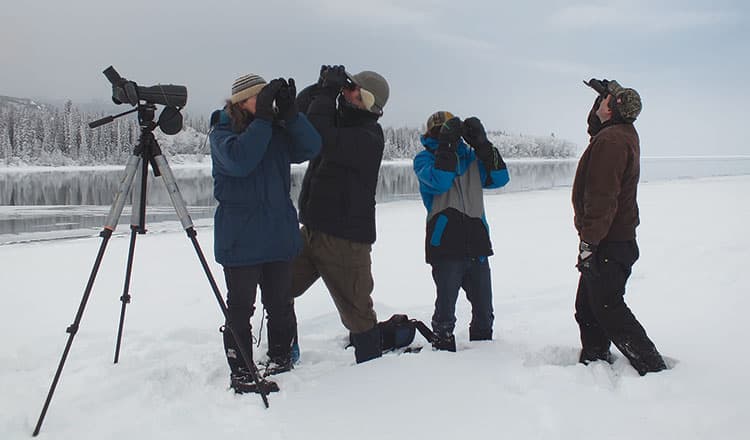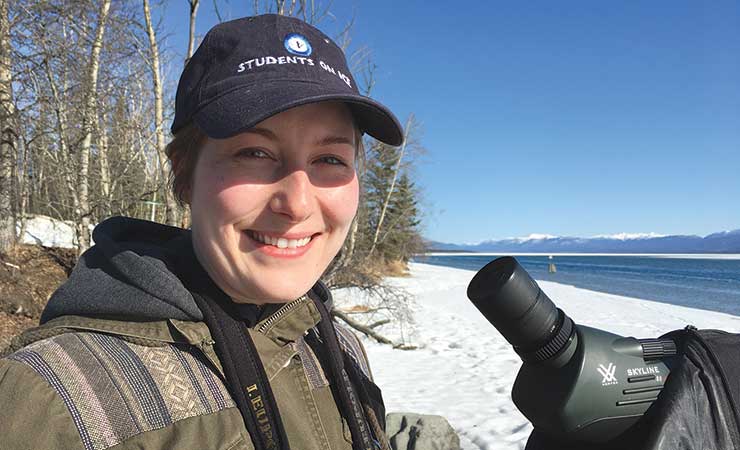I don’t remember the first time I went birdwatching as an adult, but I know that it started when I was just a kid.
Watching birds is a good way to get outdoors and connect with the natural world.
This is especially true for children.
At the age of six months, a family photo shows me enjoying a perch in my carriage to watch the goings on at the Victorian-era duck pond in the Halifax Public Gardens.
By the time I was 5, I knew all of the best vantage points from which to throw bread crusts into the hordes of very-hungry mallard ducks (and decidedly unfriendly swans).
The Yukon doesn’t have a public gardens, but we are luckier because we have many places to see birds in their natural habitats. How many cities have an eagle’s nest a short walk from city hall?
Whether you have a backyard or a patch of greenbelt nearby, live on the edge of wilderness or walk to work along the Yukon River, you will notice birds coming back now. They are in search of places to mate, nest and rear their young.
Some of them, like the cheerful chickadee, live here year round. Feeders or nest boxes can attract birds for wonderfully close views.
Last month, Swan Haven welcomed thousands of swans and ducks. Close to 800 school children discovered or rediscovered the annual phenomenon called spring migration.
Even as the swan migration passes, the birding spectacle at Swan Haven continues as thousands of shorebirds gather on the mudflats.
If you want to wander further afield to see large migrations, one of the stellar bird watching events is Faro’s annual Crane and Sheep Viewing Festival, being held May 8 to 10 this year.
The Yukon Bird Club offers a number of free birdwatching discovery trips from spring to fall, for all ages. Some involve hiking but others are just a stroll in the city.
Cameron Eckert’s popular “Quartz Road Wetland” tour (which I call the Boston Pizza Trip, because it starts in the parking lot there) offers an easy-paced walk along the productive riparian habitats of this rich wetland area. It always makes for a pleasant hour of supper-time fun.
“For kids, it’s important to make birdwatching fun. Getting close to birds, big birds like ducks or active birds, like shorebirds, is captivating for kids and adults alike,” says Eckert.
Local resident Angela Walkley took her young son on the trip last year. The four-year old still talks about seeing “yellow legs” a common shorebird there. Children soon learn that many bird names reflect their colourful or prominent features.
A bit of patience is required to teach kids to use binoculars, but they are thrilled once they get the hang of it. Try looking through the binocular backwards and seeing the world in miniature.
Another great way to introduce kids to birds is to take them to a place where they can have fun doing other things at the same time. The trip to Judas Creek with biologist Jim Hawkings is on a beautiful sandy beach decorated with candle-ice which is always a big hit with the kids.
Every neighbourhood has its duck pond and this year we’ll explore a few around Whitehorse. In June, try Katie Aitken’s trip to the ponds behind Yukon College.
For anyone interested in getting started birdwatching, Wendy Boothroyd and Ken Madsen are offering a beginner’s bird identification walk on Tuesday, May 12. Their son, Malkolm, our youngest trip leader at 17 – who, with his family, spent a year on an epic birding-bike trip from the Yukon to Texas — will offer a tour of the wonderful Millennium Trail and Yukon River.
Bird banding stations, early-morning birdsong workshops and special trips to exotic places like the fen in Copper Ridge — and even the Whitehorse sewage lagoon — are just waiting for you.


